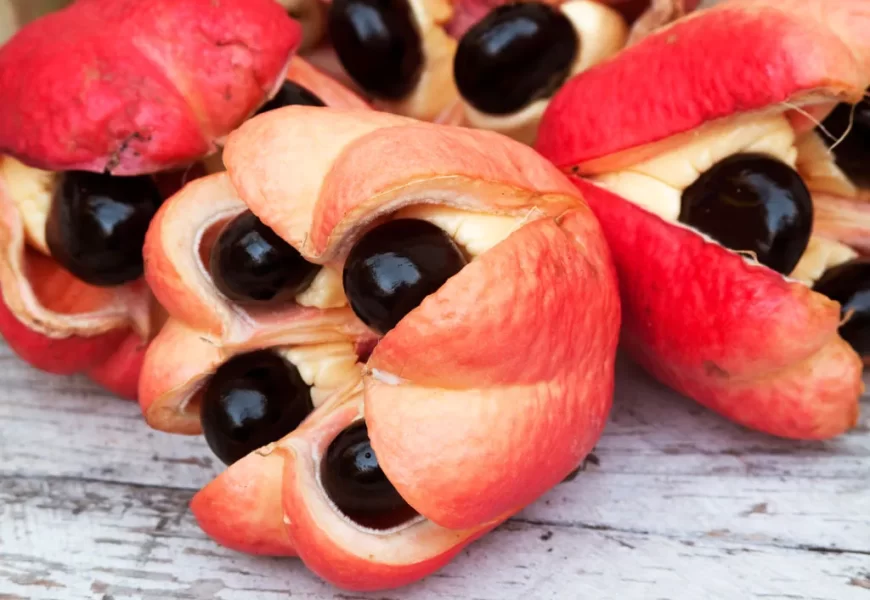Food is meant to nourish and sustain us, but some foods come with serious risks. While most people assume that spoiled or contaminated food is the biggest threat, there is one dish that is deliberately prepared and eaten, despite being known as one of the deadliest foods in the world. Shockingly, this food is responsible for over 200 deaths each year, yet nearly 500 million people continue to consume it.
What makes this food so deadly? Why do people still eat it despite the risks? And what precautions can be taken to ensure safety? Let’s explore the mystery behind the world’s most dangerous food and why it remains a popular delicacy.
Fugu – The Deadly Delicacy That Can Kill You
One of the deadliest foods in the world is fugu, also known as pufferfish. This Japanese delicacy contains a lethal toxin called tetrodotoxin, which is 1,200 times more poisonous than cyanide. Even a tiny amount can cause paralysis, respiratory failure, and death within hours.
Despite these dangers, fugu remains a highly sought-after dish in Japan and other parts of the world. People are drawn to its unique taste, cultural significance, and the thrill of eating something so dangerous. However, improper preparation can be fatal, which is why fugu chefs must undergo years of rigorous training to obtain a license.
Why Is Fugu So Dangerous?
The danger of fugu lies in its toxic organs. The liver, ovaries, and skin of the pufferfish contain tetrodotoxin, a poison that blocks nerve signals and leads to muscle paralysis. There is no known antidote, and in severe cases, death can occur within four to six hours.
Symptoms of fugu poisoning include:
✅ Numbness in the lips and tongue
✅ Dizziness and nausea
✅ Difficulty breathing
✅ Full-body paralysis
✅ Heart failure and death in severe cases
Because only expert chefs are allowed to prepare fugu, deaths are relatively rare. However, some people attempt to cook it themselves, leading to accidental poisonings.
Other Deadly Foods That People Still Eat
1. Cassava (Manioc or Yuca) – A Staple with a Hidden Danger
Cassava is a popular starchy root vegetable eaten by millions worldwide, especially in Africa, Asia, and South America. However, raw cassava contains cyanogenic glycosides, which can turn into cyanide if not properly processed.
To make cassava safe to eat, it must be:
✔️ Peeled and soaked in water
✔️ Fermented for a few days
✔️ Thoroughly cooked
If consumed raw or improperly prepared, cassava can cause cyanide poisoning, leading to nausea, dizziness, paralysis, and even death.
2. Ackee Fruit – Jamaica’s National Fruit with a Deadly Twist
Ackee is a popular fruit in Jamaica, but if eaten before fully ripening, it contains a toxin called hypoglycin A, which can cause Jamaican Vomiting Sickness. This condition leads to severe vomiting, seizures, and even coma.
To safely eat ackee, only the fully ripened yellow fruit should be consumed, while the toxic black seeds must be discarded.
3. Blood Clams – A Shellfish with Hidden Risks
Blood clams are popular in China and Southeast Asia, but they are notorious for carrying dangerous viruses like hepatitis A, hepatitis E, and typhoid fever. These clams thrive in polluted waters, making them highly susceptible to contamination.
Eating blood clams raw or undercooked increases the risk of severe infections. To reduce dangers, they must be thoroughly cooked at high temperatures before consumption.
4. Sannakji – Live Octopus That Can Choke You
Sannakji is a Korean delicacy consisting of live baby octopus that is sliced and served while still moving. The danger? The octopus’s suction cups can stick to the throat, causing choking and suffocation.
To eat sannakji safely, diners must:
✔️ Chew thoroughly before swallowing
✔️ Avoid eating large pieces
✔️ Drink plenty of water while eating
Even with precautions, choking incidents still occur every year, making it one of the riskiest seafood dishes.
5. Elderberries – A Superfood with a Poisonous Side
Elderberries are known for their immune-boosting benefits, but their unripe berries, leaves, and seeds contain cyanide-producing compounds. If eaten raw, they can cause:
✅ Severe nausea and vomiting
✅ Diarrhea and stomach cramps
✅ Weakness and confusion
To enjoy elderberries safely, they must be fully ripened and properly cooked, which removes the toxins.
Why Do People Still Eat These Dangerous Foods?
Despite the risks, millions of people continue to eat these deadly foods for several reasons:
🔹 Cultural Tradition – Many of these foods have deep historical and cultural significance, making them an integral part of local cuisines.
🔹 Unique Taste and Texture – Some people love the flavor and experience of eating these exotic dishes.
🔹 Thrill and Prestige – In some cases, eating dangerous food is seen as a status symbol or a daring challenge.
🔹 Lack of Awareness – Some individuals may not fully understand the risks associated with these foods.
How to Stay Safe While Enjoying Exotic Foods
If you love trying unique and adventurous foods, it’s essential to take precautions to ensure your safety:
✔️ Only eat from licensed and trained professionals – Avoid preparing toxic foods yourself.
✔️ Do your research – Understand the risks before consuming unfamiliar foods.
✔️ Cook thoroughly – Many toxins are destroyed by proper cooking.
✔️ Pay attention to local guidelines – Some foods are banned or restricted in certain countries for safety reasons.
Final Thoughts
Food is an essential part of culture and tradition, but some dishes come with serious health risks. While foods like fugu, cassava, ackee, and blood clams continue to be popular worldwide, understanding their dangers can help you make safer choices.
By being informed and taking proper precautions, you can enjoy exotic and adventurous foods without putting your health at risk. After all, great food should be a source of enjoyment—not danger!




